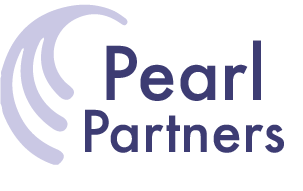In several posts, I reference the need to evolve innovation beyond new technology to reinvent human experiences as a more sustainable approach to innovation especially in Healthcare. Id like to put this idea in context to better explain what this means.
Product-Service Innovation vs Paradigm Shift: Below and Above the Line
When I give talks on innovation, I break the concept of innovation down into four dimensions. With each dimension, the initial drivers, types of insight required, types of knowledge required, and innovation outcome are all different. This is represented by the graphic above.[i]
Product or Service Innovation: Improving on the Known
In the graphic, if you look at the two dimensions below the dotted line, the approach to incremental product and process improvements are well understood. Most companies are well positioned to execute this type of innovation, as the goals and metrics are very tangible, explicit, and can be clearly articulated before the project begins. These types of innovation are also well-suited to the typical clinical development process; the success parameters and endpoints are very clear, and the likelihood of seeing wildly unexpected results is very low. As one Clinical Lead I worked with described it, We need to get the study down to the types of events that either happen or dont happen, with no gray areas in-between.
Paradigm Shift: Jumping into the Unknown
On the other hand, above the dotted line in the graphic, the types of questions we need to address are very different. If we want to figure out all the ways to build a new type of device to perform the same task (ie: What are all the ways to measure blood pressure?), we need to understand the context of use before we can figure out which technologies to use to create a better method. Or, if we want to figure out a new way to achieve our underlying goal (ie: Why am I checking blood pressure? Is there a better metric I can use?), we will need to understand why people want to achieve that goal in the first place. This is the type of understanding I refer to when discussing the need to understand the markets underlying motivations that drive their decision-making behavior. In the clinical setting, these types of learning do not lend themselves to black and white endpoints.
Different Dimensions Call for Different Approaches
One of the most common problems I see when companies (all companies, not just Healthcare) try to innovate is that they try to gain new understanding through traditional processes, and then apply traditional metrics. Said another way, they try to achieve above the line innovation goals, with below the line methods. The issue is exacerbated in Healthcare companies when they are creating documentation trails to support new ideas. This is why its crucially important to understand the type of innovation you are pursuing before starting a new program. Below the line methods are designed to leave linear, logical documentation trails. Above the line methods dont work so crisply.
Apply the Right Process to the Right Dimension
This doesnt mean that above the line innovation cannot be achieved in Healthcare. However, the right approach needs to be consciously applied. This will allow the discovery and formulation of new concepts into tangible form before trying to optimize them. This will also ensure that the paradigm shifting ideas are not morphed or killed before they can be properly formed.
With the advent of the new Healthcare environment, many companies are working on paradigm sifting, above the line innovations. However, as I mentioned in my last post, there is a lot of low hanging fruit in the Healthcare market that could benefit from thoughtful innovation below the line. The difference will be that the current metrics will need to evolve from a primarily internal company focus to a broader external market focus. I believe that this shift can easily happen with many current below the line metrics, as long as we are willing to reevaluate their focus.
More Information:
Ellen Di Resta develops global business opportunities requiring innovation initiatives across cultures, continents, and channels; building multidisciplinary design teams to translate market insights into successful new products and services. She has integrated new product innovation tools and skills into traditional development processes, and introduced new methods to promote innovative thinking in organizations.
Her current work in the healthcare industry involves defining consumer experiences in healthcare informatics and wearable technology to improve chronic disease management; identifying disruptive business opportunities in the new healthcare landscape; creating new experiences for Patients, Payers, and Healthcare Providers.
Her work has realized impressive market success for global brands such as Pampers (mentioned in the Wall Street Journal, Financial Times, and The Boston Globe) , InSinkErator, TetraPak (on the go and energy drink packages), Center for Creative Leadership, and other B2B and B2C companies.
www.amazon.com/author/ellendiresta
[i] My frequent collaborator, Heather McGowan worked with me to evolve an earlier graphic that puts these different attributes together in a single graphic, shown above modified slightly to reflect the Healthcare Industry. This graphic was used in two publications, the Global Handbook of Innovation Science, Chapter 38, and Disrupt Together: How Teams Consistently Innovate, Chapter 4

